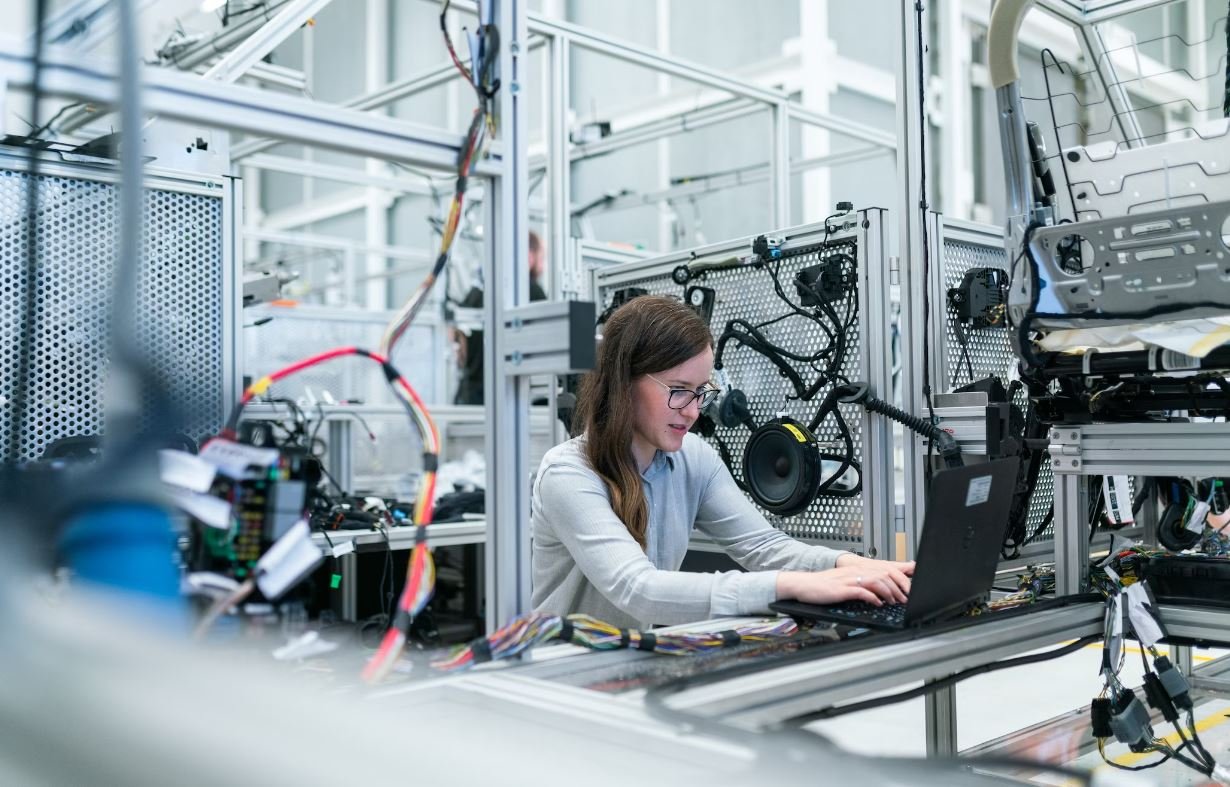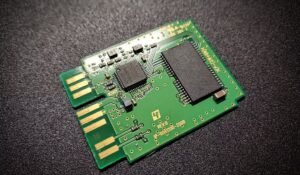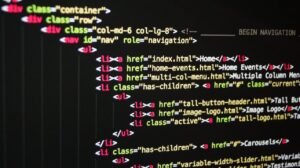When AI Was Created
In the world of technological advancements, one of the most fascinating and revolutionary innovations is Artificial Intelligence (AI). AI refers to the simulation of human intelligence in machines that are programmed to think and learn like humans. It has rapidly transformed various industries and continues to evolve at an incredible pace. But when was AI created, and how did it all begin?
The Birth of AI
The concept of AI was first proposed in the 1950s by computer pioneer Alan Turing, who posed the question, “Can machines think?”. This sparked a series of initiatives and research projects that aimed to create intelligent machines. The term “Artificial Intelligence” was coined in 1956 during a conference at Dartmouth College, where researchers gathered to discuss the potential of creating machines that could exhibit human-like intelligence.
Key Takeaways
- AI was first proposed in the 1950s by Alan Turing.
- The term “Artificial Intelligence” was coined in 1956.
- Researchers gathered at Dartmouth College to discuss AI’s potential.
The Early Years
During the 1950s and 1960s, AI research focused primarily on symbolic or rule-based approaches, where programs were designed to manipulate symbols to simulate human cognition. However, the progress was slow due to limited computational power and the lack of available data. Despite the challenges, researchers made significant advancements in areas such as logic reasoning and language processing.
Key Takeaways
- Early AI research focused on symbolic or rule-based approaches.
- Advancements were made in logic reasoning and language processing.
The AI Winter
In the 1970s, AI faced a period known as the “AI winter” due to the multiple setbacks and failures in AI research. High expectations and unrealistic goals led to disappointment, resulting in reduced funding for AI projects. This led to a decline in interest and research in the field. However, the AI winter eventually ended in the 1980s with the emergence of new approaches and technologies.
Key Takeaways
- The “AI winter” occurred in the 1970s due to setbacks and failures.
- Reduced funding and decline in interest hindered AI progress.
- The AI winter ended in the 1980s with the introduction of new approaches.
Modern AI
With the advent of powerful computers and the availability of massive amounts of data, AI has made significant strides in recent years. Machine Learning (ML) and Deep Learning (DL) have become key components of AI, enabling machines to learn from data and make intelligent decisions. AI is now being used in various domains, including healthcare, finance, transportation, and entertainment, with breakthroughs such as self-driving cars and voice assistants revolutionizing the way we live and work.
Key Takeaways
- Modern AI relies on Machine Learning and Deep Learning.
- AI is applied in healthcare, finance, transportation, and entertainment.
- Breakthroughs like self-driving cars and voice assistants have transformed industries.
| Milestone | Year |
|---|---|
| IBM’s Deep Blue defeats chess champion Garry Kasparov | 1997 |
| Google’s self-driving car completes a 100-mile journey | 2009 |
| IBM’s Watson wins Jeopardy! against human champions | 2011 |
Despite its early challenges, AI has come a long way since its inception and continues to push boundaries with new breakthroughs and advancements.
The Future of AI
The future of AI is promising, with ongoing research and development in fields like natural language processing, computer vision, and robotics. The integration of AI into our daily lives will likely become more prevalent, with advancements in areas such as virtual assistants, personalized medicine, and autonomous systems. As AI continues to evolve, we can expect even greater innovation and transformative impacts across various industries.
| Industry | Estimated AI Adoption by 2025 |
|---|---|
| Healthcare | 30% |
| Financial Services | 27% |
| Transportation and Logistics | 22% |
The continuous advancements in AI promise a future where intelligent machines will revolutionize various industries and enhance our everyday lives.

When AI Was Created
Common Misconceptions
One common misconception people have about the creation of AI is that it happened overnight. However, the development of artificial intelligence has been a long and gradual process that started as early as the 1950s. While advancements in AI have become more prominent in recent years, it is important to acknowledge the contributions and milestones achieved by researchers and scientists over several decades.
- AI development has been ongoing since the 1950s.
- The progress in AI has been gradual and continuous.
- AI is not a recent invention, but a result of years of research and development.
Another misconception surrounding the creation of AI is that it is solely the work of a single individual or organization. In reality, the development of AI has involved the collaboration of scientists and researchers from various fields such as computer science, mathematics, neuroscience, and engineering. The interdisciplinary nature of AI research has greatly contributed to its advancements and breakthroughs.
- AI development involves the collaboration of multiple disciplines.
- Scientists from various fields contribute to AI research.
- No single individual or organization can take credit for the creation of AI.
Some people mistakenly believe that AI possesses human-like capabilities and consciousness. While AI systems can perform complex tasks and mimic human behavior to some extent, they do not possess consciousness or true understanding. AI algorithms are designed to process data and make predictions based on patterns and rules, but they lack human-like emotions, intuition, and consciousness.
- AI systems lack true consciousness.
- AI algorithms make predictions based on patterns and rules, not understanding.
- AI does not possess human-like emotions or intuition.
A common misconception is that AI will eventually replace human jobs entirely. While it is true that AI has the potential to automate certain tasks and roles, it is more likely to augment human capabilities rather than replace them completely. AI can assist in improving efficiency and productivity in various industries, but it is still dependent on human input, creativity, and decision-making.
- AI is more likely to augment human capabilities rather than replace them.
- AI can assist in improving efficiency and productivity in industries.
- Human input, creativity, and decision-making are still essential alongside AI.
Lastly, many people have the misconception that AI is infallible and always accurate. However, AI systems are not immune to errors or biases. They are trained using datasets and algorithms that may contain inherent biases, leading to discriminatory outcomes. It is crucial to ensure transparency, ethical considerations, and constant monitoring to prevent potential biases and errors in AI systems.
- AI systems can have errors and biases.
- Datasets and algorithms used to train AI can introduce biases.
- Transparency and continuous monitoring are necessary to prevent biases and errors.

The Birth of AI
Artificial Intelligence (AI) has revolutionized various industries and aspects of daily life. This article explores the key milestones and breakthroughs that contributed to the development of AI.
Technological Advancements
This table highlights significant technological advancements that paved the way for the creation of AI:
| Year | Advancement |
|---|---|
| 1936 | Alan Turing introduces the concept of a Universal Turing Machine. |
| 1943 | Warren McCulloch and Walter Pitts develop the first computational model of a neural network. |
| 1956 | John McCarthy coins the term “Artificial Intelligence” during the Dartmouth AI Conference. |
Early AI Systems
This table showcases some of the pioneering AI systems designed during the initial years:
| System | Year |
|---|---|
| Logic Theorist | 1956 |
| Shakey | 1966 |
| ELIZA | 1966 |
The Rise of Machine Learning
This table explores the significant contributions to machine learning:
| Year | Contribution |
|---|---|
| 1979 | Tom M. Mitchell coins the term “machine learning” in his Ph.D. thesis. |
| 1986 | The backpropagation algorithm revolutionizes neural network training. |
| 1995 | Vladimir Vapnik introduces the Support Vector Machine algorithm. |
AI in Popular Culture
This table highlights iconic portrayals of AI in popular culture:
| Movie/TV Show | Year |
|---|---|
| Metropolis | 1927 |
| Blade Runner | 1982 |
| Artificial Intelligence: AI | 2001 |
AI Ethics
This table sheds light on crucial ethical considerations related to AI:
| Issue | Description |
|---|---|
| Privacy | AI’s potential impact on personal data privacy. |
| Job Displacement | The automation of certain job roles due to AI implementation. |
| Algorithmic Bias | Unfair discrimination arising from biased algorithms. |
Current AI Applications
This table outlines various applications of AI in today’s world:
| Industry | AI Application |
|---|---|
| Healthcare | Diagnosis assistance systems |
| Finance | Fraud detection algorithms |
| Transportation | Autonomous vehicles |
Influential AI Researchers
This table acknowledges prominent researchers in the field of AI:
| Name | Affiliation |
|---|---|
| Geoffrey Hinton | University of Toronto and Google Brain |
| Yoshua Bengio | University of Montreal and Mila |
| Andrew Ng | Stanford University and Deeplearning.ai |
Future Possibilities
This table delves into potential future developments in AI:
| Possibility | Description |
|---|---|
| Sentient Robots | Development of AI entities capable of human-like consciousness. |
| Superintelligence | Creation of AI surpassing human intelligence and capabilities. |
| AI-Augmented Humans | Integration of AI technology into human cognition and abilities. |
Conclusion
From the early advancements and AI systems to the current applications and ethical concerns, the evolution of AI has been a fascinating journey. As technology continues to advance, the future possibilities of AI present both exciting opportunities and potential challenges. AI’s impact on society is undeniable, and it will play a significant role in shaping the world we live in.
When AI Was Created
Frequently Asked Questions
Who is considered the father of AI?
Who is considered the father of AI?
When was AI first developed?
When was AI first developed?
What were the main goals of early AI research?
What were the main goals of early AI research?
What are the different branches of AI?
What are the different branches of AI?
What are some notable AI milestones?
What are some notable AI milestones?
How has AI evolved over time?
How has AI evolved over time?
What are the main applications of AI today?
What are the main applications of AI today?
What are the ethical considerations surrounding AI?
What are the ethical considerations surrounding AI?
What is the future of AI?
What is the future of AI?
Can AI replace humans?
Can AI replace humans?




